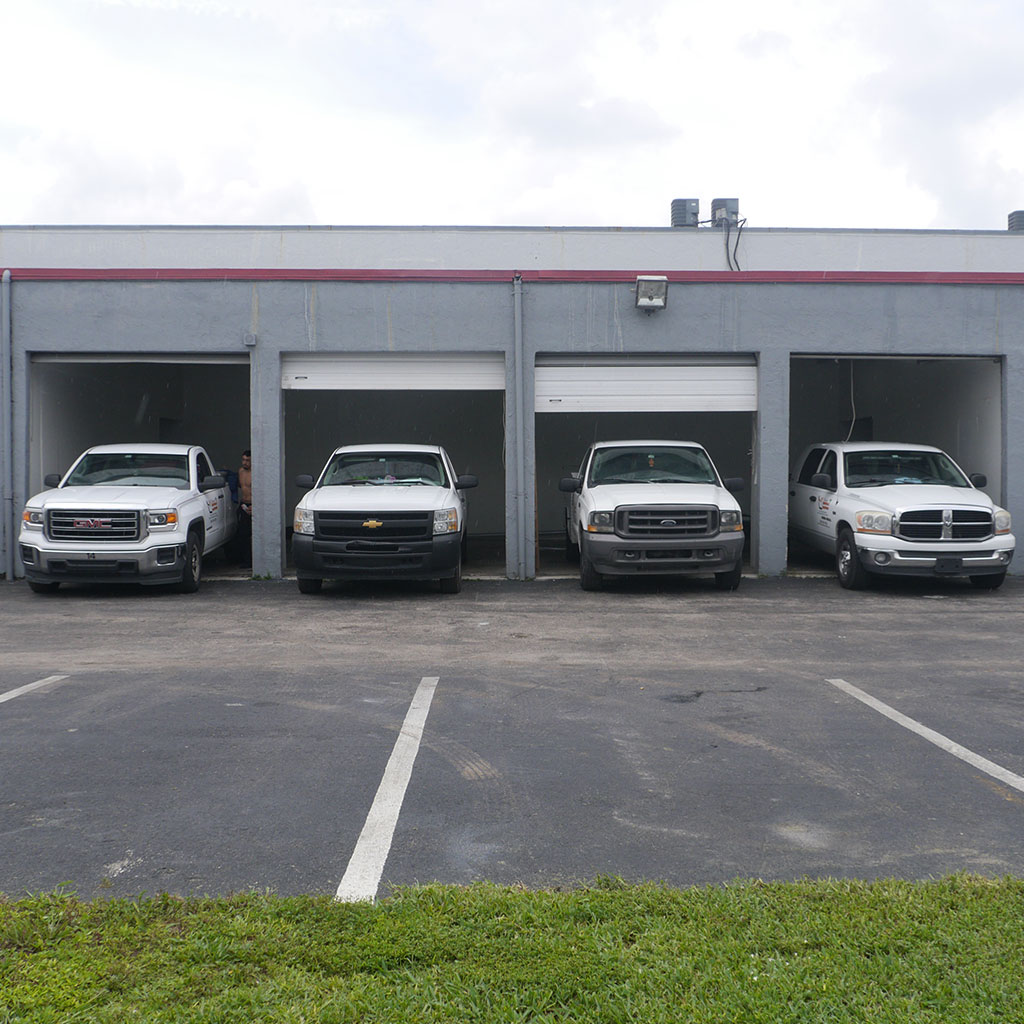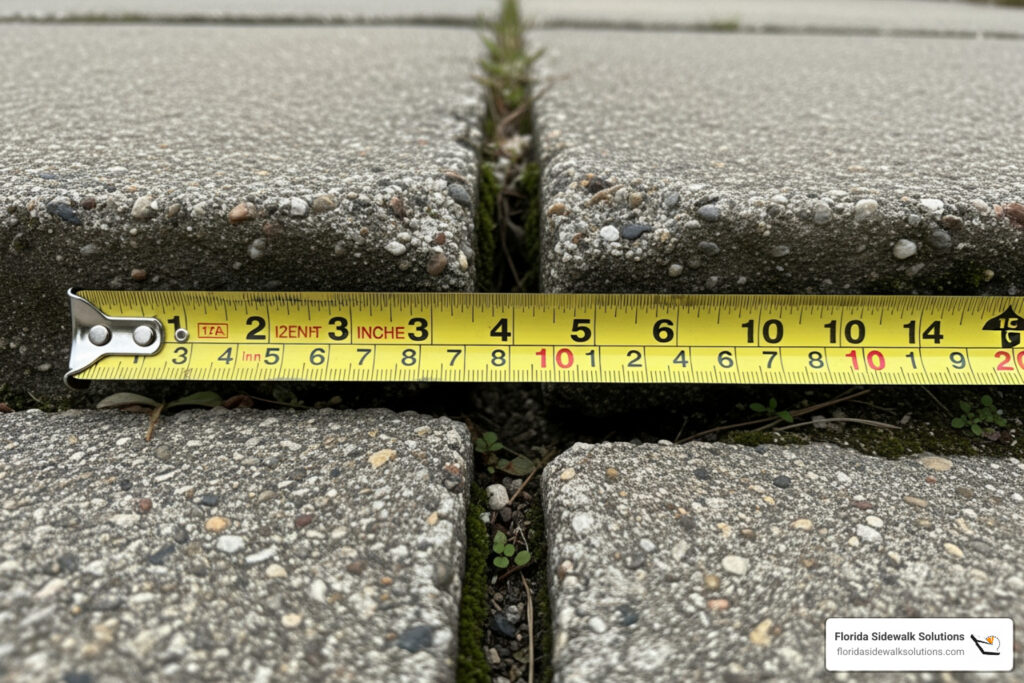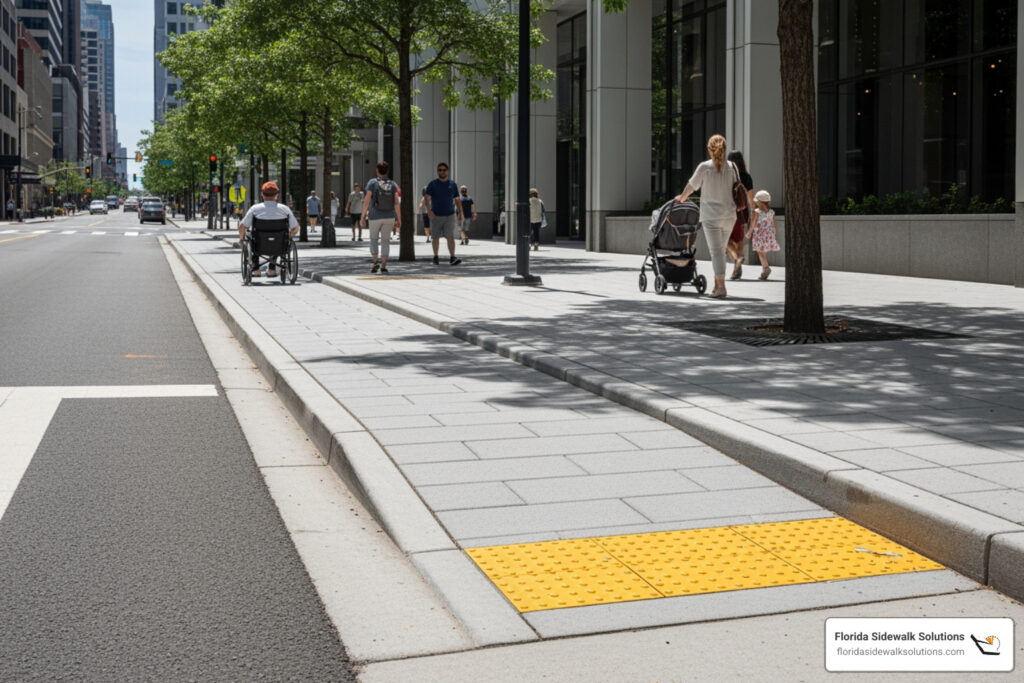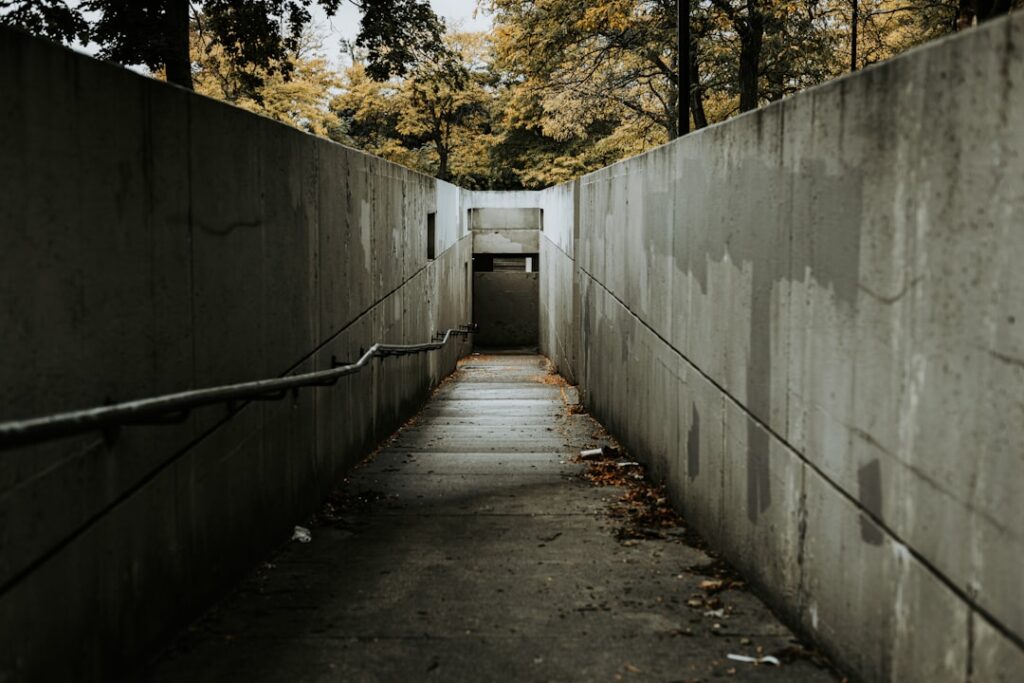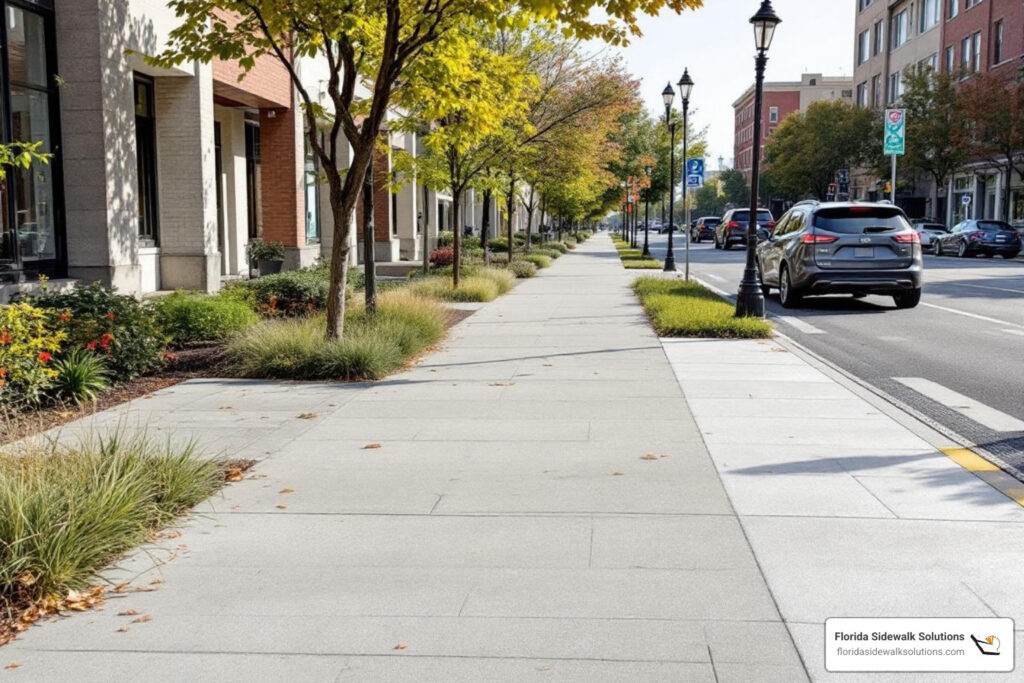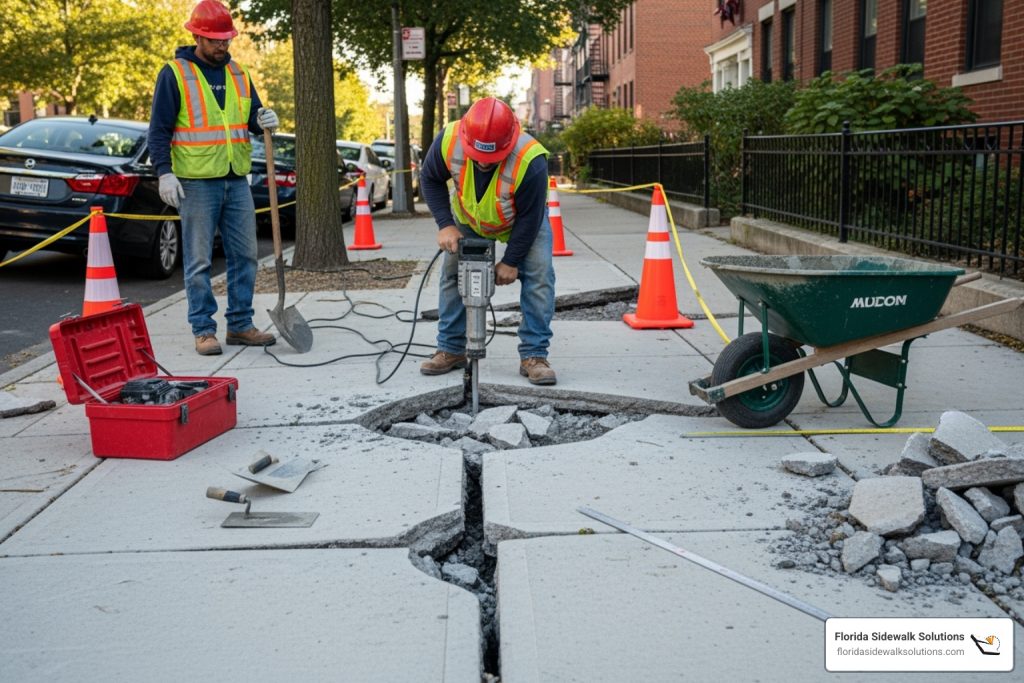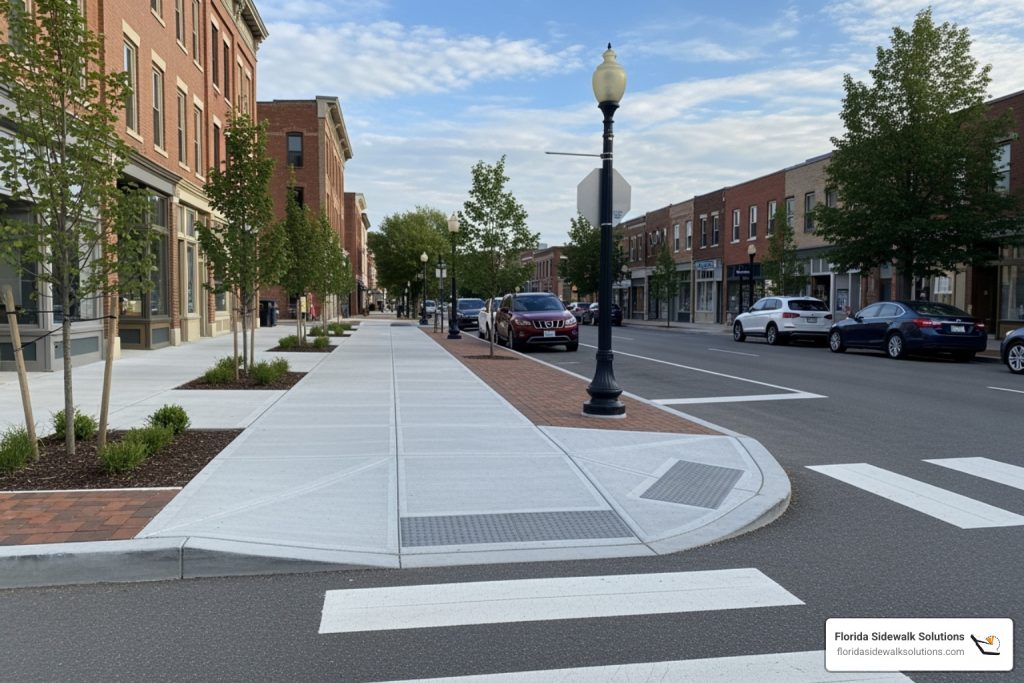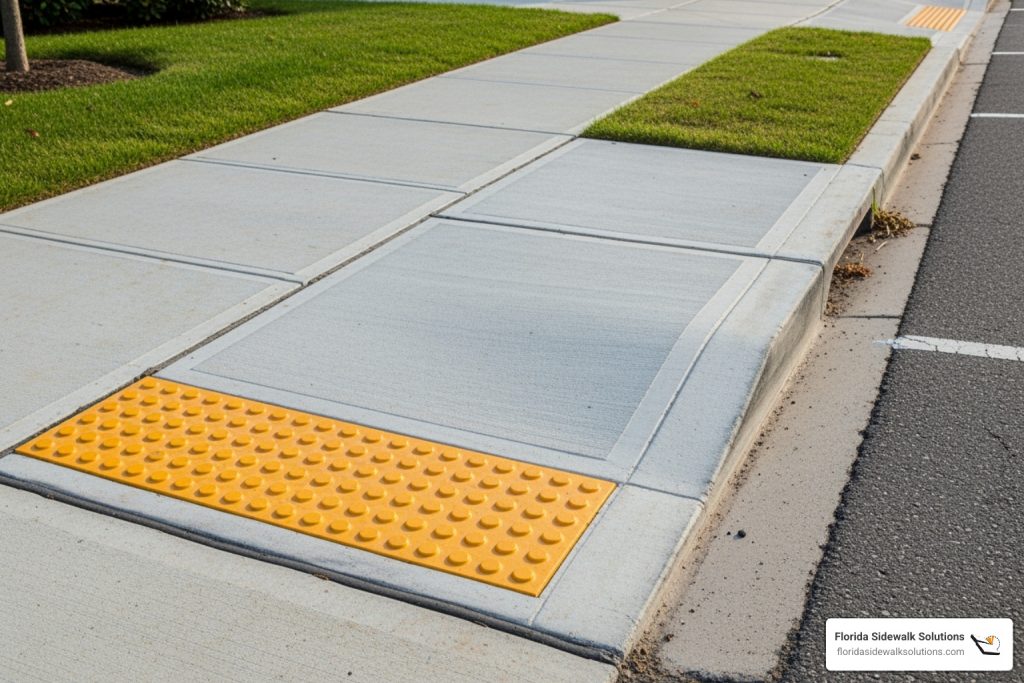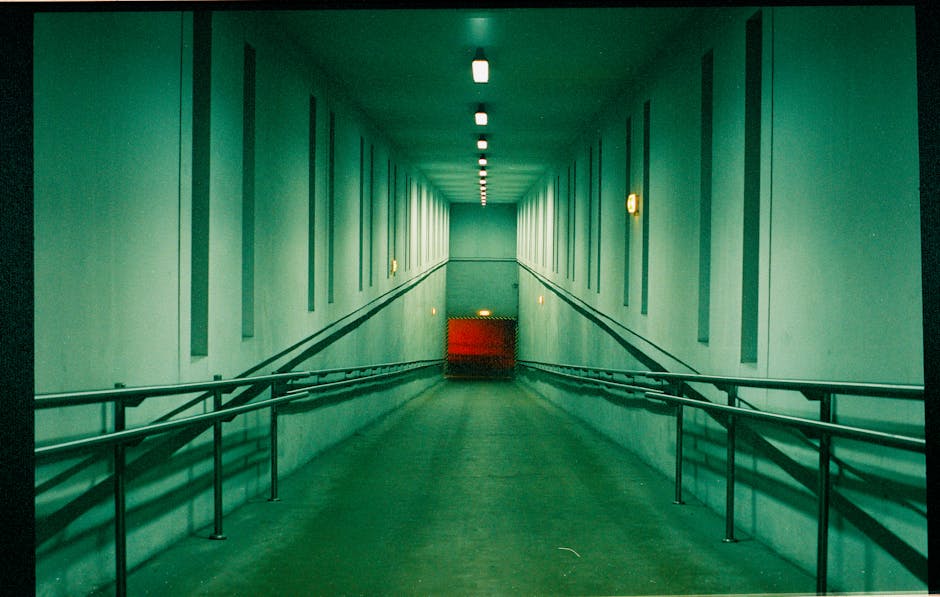Sidewalk trip hazard removal is a crucial concern for maintaining public safety and ensuring compliance with the Americans with Disabilities Act (ADA). In many communities, uneven sidewalk surfaces pose real risks, not just for pedestrians but also for property owners liable for accidents.
When sidewalks become uneven due to soil shifting or environmental factors, they create trip hazards. These hazards aren’t just dangerous; they can also lead to costly lawsuits and fines if they fail to meet ADA standards. Thankfully, effective solutions exist that address these issues economically and efficiently.
Key points to remember:
- Trip Hazard Definition: A vertical rise of ¼ inch or more on a walking surface.
- Safety Impact: Increased risk of falls, especially for children, the elderly, and those with disabilities.
- ADA Compliance: Required by federal law; failure to comply can lead to legal liabilities.
- Solution: Precision concrete cutting is a cost-effective method that ensures ADA compliance with minimal disruption.
Choosing the right solution provider can make all the difference in maintaining safe, accessible pathways that meet regulatory standards. By addressing trip hazards promptly, municipalities and property owners can significantly reduce their risk while keeping pathways open and safe for all users.

Understanding Sidewalk Trip Hazards
Sidewalk trip hazards can be a hidden danger in our communities. They are often caused by uneven surfaces, cracks, and environmental factors. Understanding these hazards is the first step in preventing accidents and ensuring safety for everyone.
Uneven Surfaces and Cracks
Uneven surfaces occur when one concrete slab rises or sinks compared to its neighbor. This can create a trip hazard, especially if the difference is ¼ inch or more, as defined by the ADA. Cracks in the sidewalk, often caused by natural wear and tear, can also become trip hazards if they lead to uneven sections.
Soil Shifting
Soil shifting is a common cause of uneven sidewalks. As the soil beneath the concrete expands and contracts due to temperature changes or moisture levels, the slabs above can shift. This natural process can lead to significant changes in the sidewalk’s surface over time.
Environmental Factors
Environmental factors like tree roots, heavy rainfall, and temperature fluctuations can exacerbate the problem. Tree roots, in particular, can lift concrete slabs, creating dangerous trip hazards. Likewise, heavy rainfall can erode the soil underneath, causing slabs to sink or tilt.
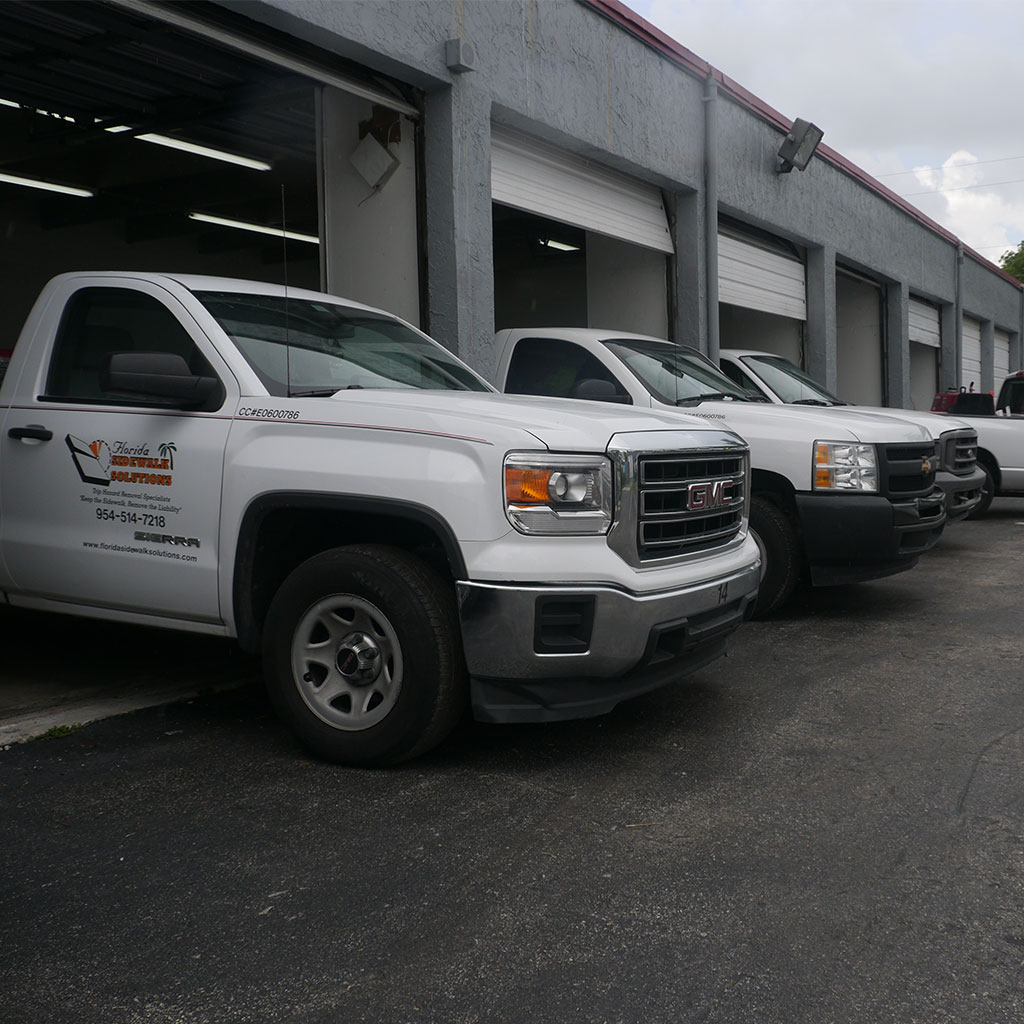
Addressing these factors requires a proactive approach to sidewalk trip hazard removal. By understanding the causes, property owners and municipalities can implement effective solutions like precision concrete cutting to maintain safe, accessible pathways.
Effective Methods for Sidewalk Trip Hazard Removal
When it comes to sidewalk trip hazard removal, the method you choose can make all the difference. The right approach not only ensures safety but also complies with ADA standards, all while minimizing disruption.
Concrete Cutting: The Best Method
Concrete cutting is the most effective technique for removing trip hazards. Unlike traditional methods like concrete grinding or complete slab replacement, concrete cutting offers precision and efficiency. It involves slicing through the uneven concrete to create a smooth, level surface.
Why choose concrete cutting?
-
Complete ADA Compliance: The ADA requires that any slope caused by cracks or joints in concrete must not exceed 1/4 inch. Concrete cutting ensures that all slopes meet these standards, making sidewalks safe for everyone, including those with disabilities.
-
Minimal Disruption: One of the standout benefits of concrete cutting is that it causes minimal disruption. The process is quick, and the sidewalk can often be used the same day. This is a significant advantage for busy areas where pedestrian access is a priority.
-
Cost-Effective: Concrete cutting is less expensive than replacing entire slabs or using grinders. It offers long-lasting results without the high costs associated with other methods.

Precision and Accessibility
Precision is key in this method. By cutting only where necessary, the process retains as much of the original sidewalk as possible, ensuring a seamless appearance. This precision also extends to hard-to-reach areas, such as those near walls or in gutters, where other methods might fail.
In summary, concrete cutting is the preferred choice for sidewalk trip hazard removal. It offers a blend of efficiency, compliance, and cost-effectiveness that other methods simply can’t match. By adopting this approach, property owners and municipalities can ensure their pathways are safe, accessible, and visually appealing.
Next, we’ll dive into the benefits of concrete cutting and why it stands out as the top choice for trip hazard removal.
Benefits of Concrete Cutting for Trip Hazard Removal
Concrete cutting is not just a method; it’s a smart investment for anyone responsible for maintaining safe sidewalks. Here’s why it stands out:
Cost-Effective
Concrete cutting is a budget-friendly solution for sidewalk trip hazard removal. Unlike traditional methods that may require tearing out entire slabs, concrete cutting targets only the problem areas. This precision reduces labor and material costs significantly.
- Avoids Full Replacement: By cutting only where necessary, you save on the cost of new concrete and extensive labor.
- Reduces Liability: Addressing trip hazards promptly can prevent costly legal claims. With concrete cutting, you get a reliable fix without breaking the bank.
Long-Lasting
Durability is another hallmark of concrete cutting. Once a trip hazard is removed, you can expect the repair to last for years.
- Precision Cuts: The precise nature of concrete cutting means that the problem is fully resolved, not just patched over. This leads to a longer-lasting solution.
- Less Wear and Tear: By preserving the integrity of the surrounding concrete, you minimize future issues and extend the lifespan of the sidewalk.
Environmentally Friendly
Concrete cutting is a green choice for maintaining sidewalks. It uses less material and energy compared to other methods.
- Minimal Waste: Since you’re not replacing entire slabs, there’s significantly less debris and waste.
- Lower Carbon Footprint: The process is efficient and uses fewer resources, reducing the environmental impact.
In conclusion, concrete cutting offers a trifecta of benefits: it’s cost-effective, long-lasting, and environmentally friendly. These advantages make it the superior choice for anyone looking to manage sidewalk safety effectively.
Next, let’s address some common questions about sidewalk trip hazard removal.
Frequently Asked Questions about Sidewalk Trip Hazard Removal
What is considered a trip hazard on a sidewalk?
A trip hazard on a sidewalk is any vertical change of ¼ inch or more at a joint or crack. This unevenness can occur when two concrete slabs meet but don’t align properly. Common causes include soil shifting, tree roots, and weather changes. These hazards can pose a risk to pedestrians, especially for young children, the elderly, and those with disabilities.
How to mark a tripping hazard?
Marking a tripping hazard is crucial to prevent accidents. The Occupational Safety and Health Administration (OSHA) recommends using a yellow marking to alert pedestrians to potential dangers. This bright color is easily noticeable and universally recognized as a warning. By marking hazards promptly, you can prevent injuries and highlight areas that need repair.
Is an uneven sidewalk a trip hazard?
Yes, an uneven sidewalk is definitely a trip hazard. Even minor unevenness can cause someone to trip and fall. While some might consider concrete grinding to fix minor unevenness, it’s often not the most effective solution. Instead, cutting the concrete to level the surface is more efficient and long-lasting. This method ensures that sidewalks are both safe and compliant with ADA standards.
Addressing these common concerns is key to maintaining safe and accessible walkways. By understanding what constitutes a trip hazard and how to manage it, you can keep your sidewalks safe for everyone.
Conclusion
At Florida Sidewalk Solutions, we are committed to providing superior solutions for sidewalk trip hazard removal. Our patented technology sets us apart, offering a more effective and economical approach compared to traditional methods like concrete grinding or full replacement.
Our method of cutting concrete ensures that sidewalks are level, safe, and fully compliant with ADA standards. This approach not only reduces the risk of accidents but also minimizes disruption to the surrounding area. By choosing us, you can avoid the high costs and inconvenience associated with other repair methods.
In addition to being cost-effective, our solutions are long-lasting and environmentally friendly. We understand the importance of maintaining safe walkways for everyone, from young children to the elderly and those with disabilities. Our commitment to excellence ensures that you receive the best service possible.
For more information on how we can help you remove trip hazards and make your sidewalks safe, visit our trip hazard removal service page and let us guide you to a hazard-free path.

